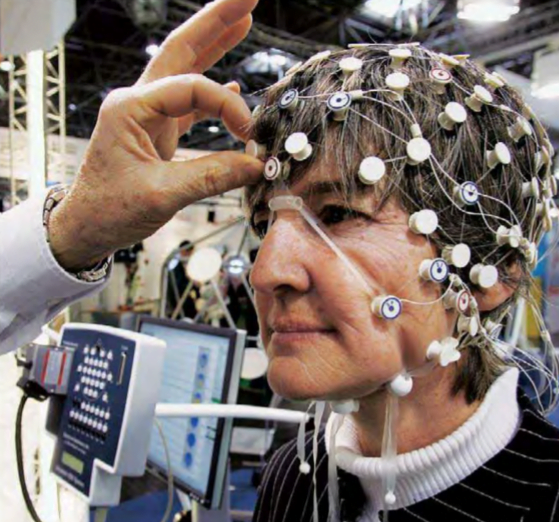EPILEPSY
On a summer day, storm clouds can suddenly gather and transform an afternoon of sunshine into a violent monster of rain, hail, lightning bolts, and the occasional twister. Sunlight and warmth get blotted out. So it is with the nervous system. The brain’s higher functions, working in harmony with the body, promote consciousness and a sense of well-being. But because the brain functions through the medium of electrochemical reactions, the occasional storm knocks the brain out of balance.
Epilepsy is a flood of electrical discharges in groups of cranial neurons. While the brain suffers through its own electrical storms, no other signals get passed through. Those who suffer an attack may fall to the ground, black out, foam at the mouth, and jerk about uncontrollably. Epileptic seizures can last from a few seconds to a few minutes, and can vary widely in their ferocity.
TYPES OF EPILEPTIC SEIZURE
The mildest used to be called petit mal, French for “little illness.” Now they’re referred to as absence seizures. Sufferers, usually young children, lose consciousness for a few seconds, often staring blankly into space. They typically do not know what has happened to them. Such seizures usually go away by age ten.
Stronger, convulsive seizures are called tonic-clonic, which replaces the old term, grand mal, French for “big illness.” Epileptics in the midst of a tonic-clonic seizure lose consciousness and may experience loss of bowel or bladder control, as well as muscle contractions so severe they have been known to break bones. After a few minutes, when a major seizure dissipates, the sufferer slowly regams awareness. Some tonic-clonic attacks give fair warning. Sensory hallucinations known as auras, including smells and bright lights, give the sufferer a chance to lie on the floor before the onset to avoid the potential injury of falling.
DIVINE ILLNESS
A NEUROSCIENCE JOURNAL article in 1997 listed religious figures thought to be linked with epilepsy because of recorded accounts that match its symptoms. The historical figures included:
- Saint Paul, apostle and writer of much of the New Testament.
- Joan of Arc, 15th-century saint and heroine of France.
- Emanuel Swedenborg, 18th-century theologian.
- Ann Lee, 18th-century leader of the “Shaking Quakers,” or Shakers.
- Joseph Smith, 19th-century founder of the Church of Jesus Christ of Latter-day Saints, commonly called the Mormon Church.
CAUSES & TREATMENTS
Epilepsy has a variety of causes. Some are genetic in origin and caused by an inherent problem in the brain. Typically, the disease strikes far more men than it does women. Other cases have their onset after physical injuries to the brain, such as strokes, fevers, tumors, or head wounds.
About the size of an almond, the small hypothalamus plays a big role in both the nervous and endocrine systems.
Treatment options include anticonvulsive drugs and vagus nerve stimulation. In the latter, stimulators are implanted in the chest to send regular pulses of electricity through the vagus nerve to the brain. These pulses aim to keep the brain’s electrical activity from tipping from order to chaos.
New possibilities include the implantation of monitoring devices combined with electrical stimulators or drugs. The idea is to detect the subtle electrical changes that signal an oncoming epileptic seizure, then deliver a small shock or dose of medicine to ward off the attack before it strikes.


